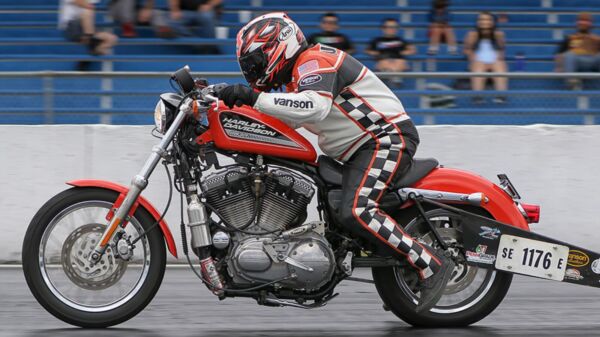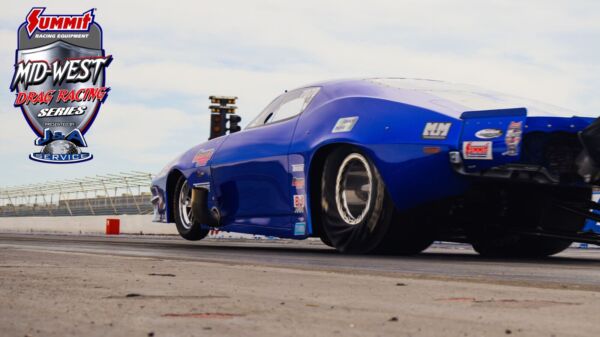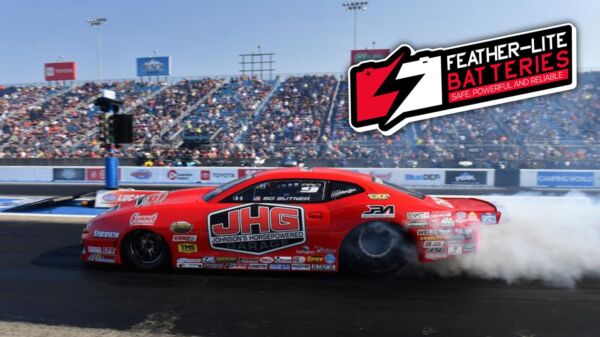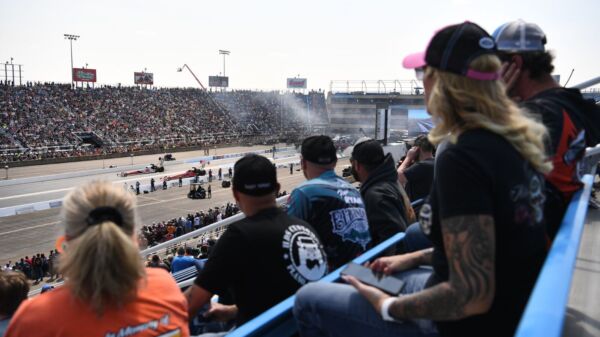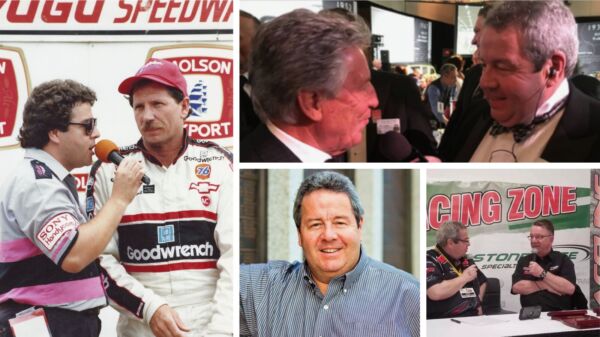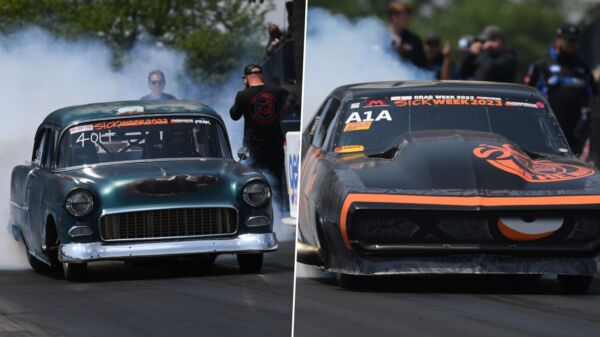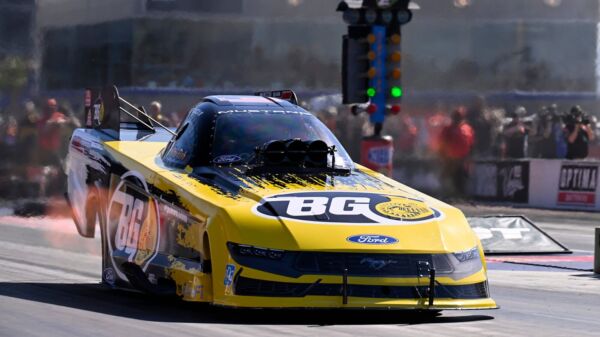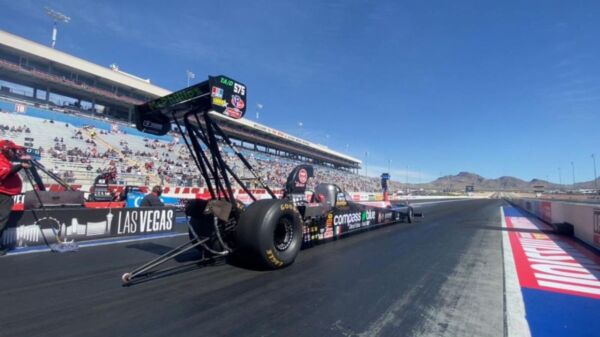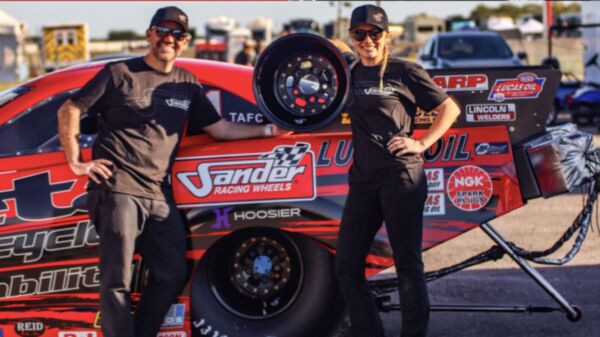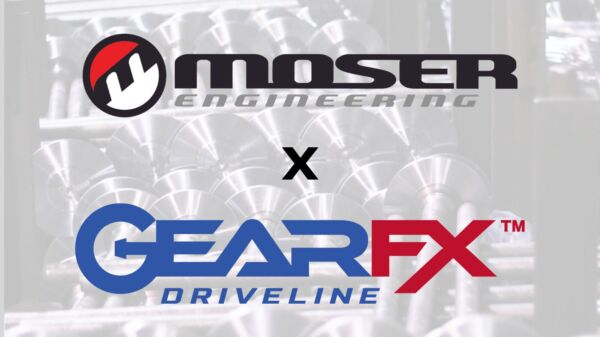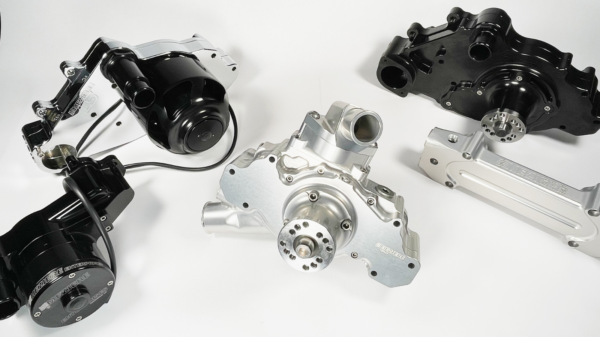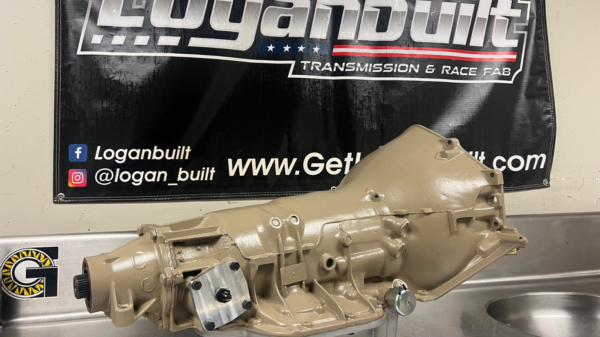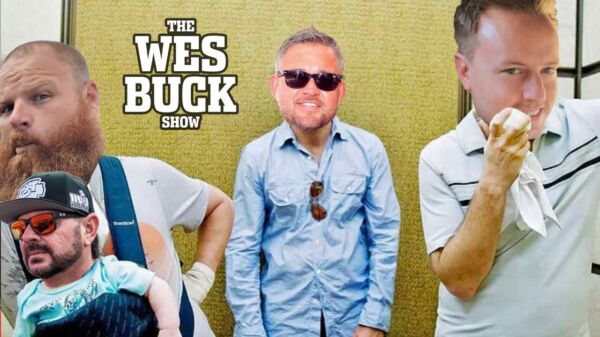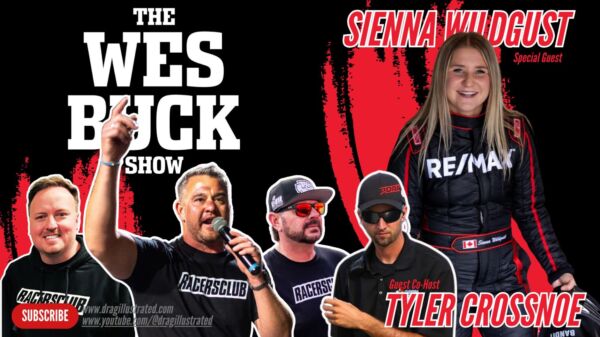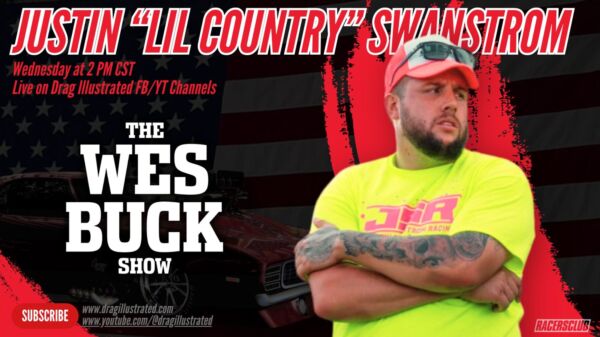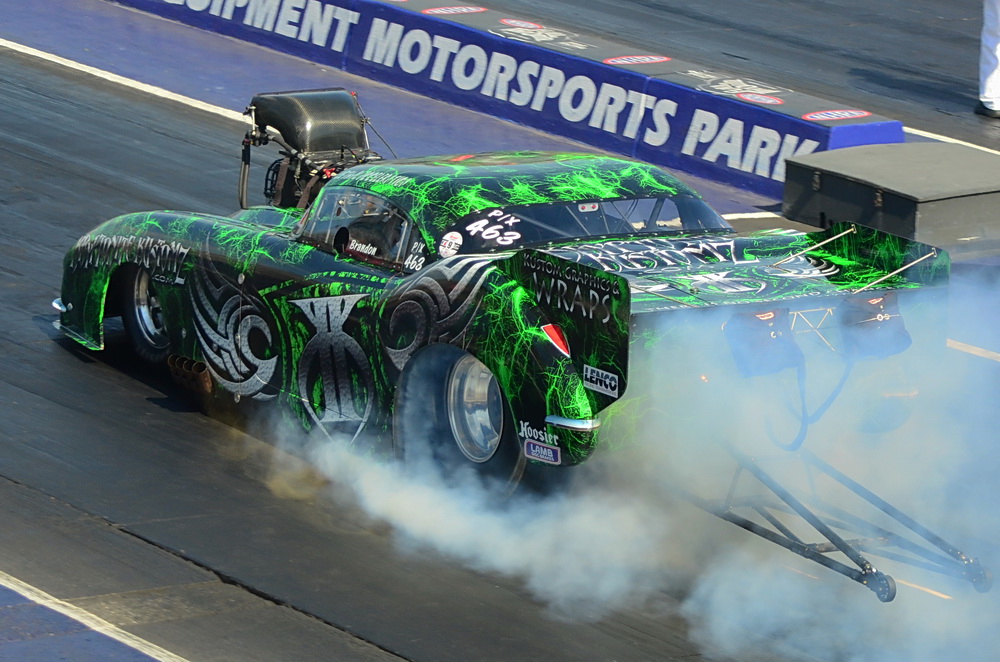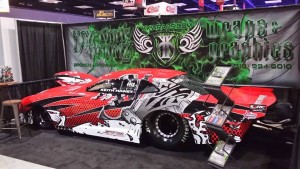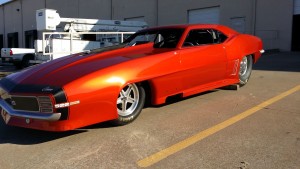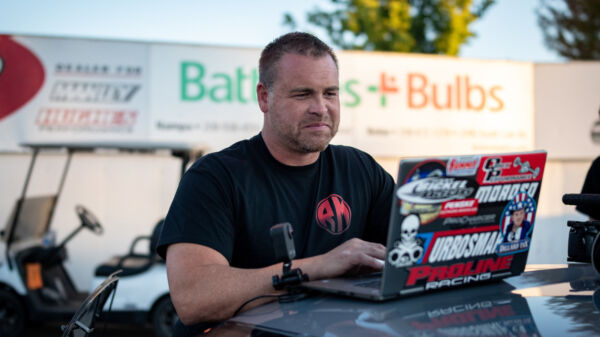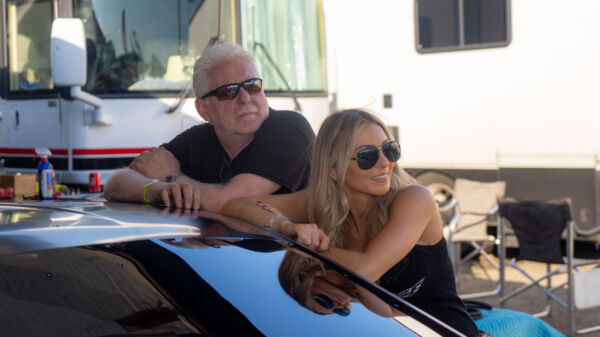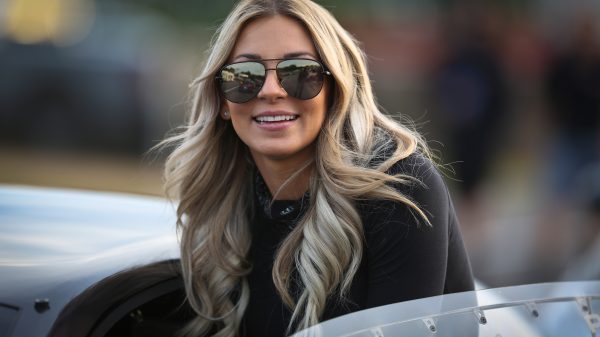Anyone who has spent time around drag racing knows that everything about the sport is extreme, and that definitely includes the appearance of the cars. Extremity is even more prevalent in the world of Pro Modified, where looks can range from the classic look of a bright orange Camaro to a swoopy ’41 Willys with intricate airbrushed murals. While paint has long been the medium of choice to transform a bare shell into a show-quality race car, more and more racers are taking advantage of the positives of vinyl wraps. When we decided to learn more about wraps and why they should be considered for racing applications, we reached out to Chris Davis, owner of Kryptonite Kustomz.
“Wraps originated in commercial use, and I personally saw a good fit for the racing industry because there are so many pluses of using a wrap rather than paint. It’s lighter than paint, it’s easier to repair than paint and it doesn’t take as long to apply as paint. We just enjoy getting to go to the extremes on designs for race cars. That’s another cool part of doing race cars versus subtle commercial graphics. Plus, race cars present twice the challenges. Race cars are way more difficult to do than just a regular production car. We thought we would pursue this industry and just be good at it, be the best at it. That’s the reputation that we’re building right now.”
Kryptonite Kustomz is still fairly new to the scene, but they’ve arrived in a big way. The Broken Arrow, Okla.-based shop is geared towards the racing industry, from their facility capable of housing race rigs with RV hook-ups and climate control, to the lightweight, high quality vinyl used to wrap the cars almost seamlessly. Kryptonite maintains a presence in the Professional Drag Racers Association (PDRA), serving as an official series sponsors and wrap provider of some of the top cars. The shop was busy this week wrapping cars for the rapidly approaching season, but Davis took the time to provide these facts about vinyl wraps.
1. Wraps are lighter than paint.
“In my experience with the material that I use, the entire end product on the car weighs approximately five pounds on a Pro Mod, where paint could weigh 20 pounds depending on how thick or thin it’s applied. When some racers are trying to shave off weight by the ounces, that’s a big advantage.”
2. It’s quick and easy to repair a section of a wrap.
“Say a body panel gets damaged. We save all of our designs on the computer. You can print it in a day and install it in a day. You could mess it up one weekend and be back on the track the next weekend, which would be almost impossible to repair paint that way.”
3. While not suggested, vinyl can be applied trackside.
“If we’re at the event it can be done. It’s not recommended. Often we will bring our printing equipment with us to the track, so it can be done. I wouldn’t recommend doing a full car from scratch at the track because you really need a controlled environment. If it’s too hot or too cold the vinyl can break or stretch.”
4. The quality of the vinyl and installation will be reflected in the finished product.
“I personally lean towards using 3M products. I believe they’re the best on the market. The quality of the 3M vinyl, if you use their high performance vinyl, is ultra-thin, which means it’s ultra-light. It’s very conformable for the race cars. Even just the install aspect can make or break a wrap. We go out of our way to hide any seams that have to be on the car. We really just go the extra mile to make it look as close to paint as we can.”
5. Vinyl technology improves yearly.
“The vinyl is becoming more user-friendly. It’s more conformable which means it goes around the corners better. It’s lighter. On the pre-made color vinyl, the color range is just vastly improving every year. It seems like every year they’re bringing out a different product. It’s ever-changing annually.”
6. Better technology means vinyl can look more similar to paint.
“3M makes a pre-manufactured color vinyl, new to the market this year, that’s almost a candy metallic color. There’s a wide range of colors available now. So there’s several options you can go with; a printed wrap with a super high-gloss laminate or a solid color that’s just a knock-your-socks-off candy color.”
For more information on Kryptonite Kustomz and the products and services they offer, visit www.kkwraps.com or find them on Facebook at Kryptonite Kustomz, LLC.
GOOD READS
- In this interview with Headlines & Global News (hdgn.com), NHRA Pro Stock team owner Victor Cagnazzi discusses the physics behind drag racing, why he abandoned the driver’s seat to focus on engineering, and much more.
- Reigning NHRA Funny Car champion Matt Hagan visited Detroit this week, where he visited Chrysler’s headquarters in Auburn Hills, drove the Zamboni at a Detroit Red Wings game, and met with Detroit Free Press reporter Mike Brudenell for this Q&A article. Want to know what was Matt’s strangest experience as a driver? Click through to the interview here.
- Before Lizzy Musi was one of the stars of PDRA Pro Nitrous in 2014, winning her first race at Virginia and finishing third in the points standings, she was on the cover of our 2014 Hottest Women in Drag Racing issue. Her full article can be found on page 68 of your copy of the ultra-popular issue, or here in the online digital edition.
GOOD VIEWS
- Kryptonite Kustomz owner Chris Davis might answer a few more of your vinyl wrap questions in this interview with PDRA TV at the PRI Show last year.
- The K&N Spring Fling 5-Day race at Thunder Valley Raceway has grown to become one of the largest bracket racing events in the world. Inside Drag Racing presents their coverage of the 2014 race.
- RaceWorks.com put together this montage covering the championship season of PDRA Pro Extreme driver Bubba Stanton and his Roger Henson-owned ’69 Camaro.
This story was originally published on January 21, 2015. 
